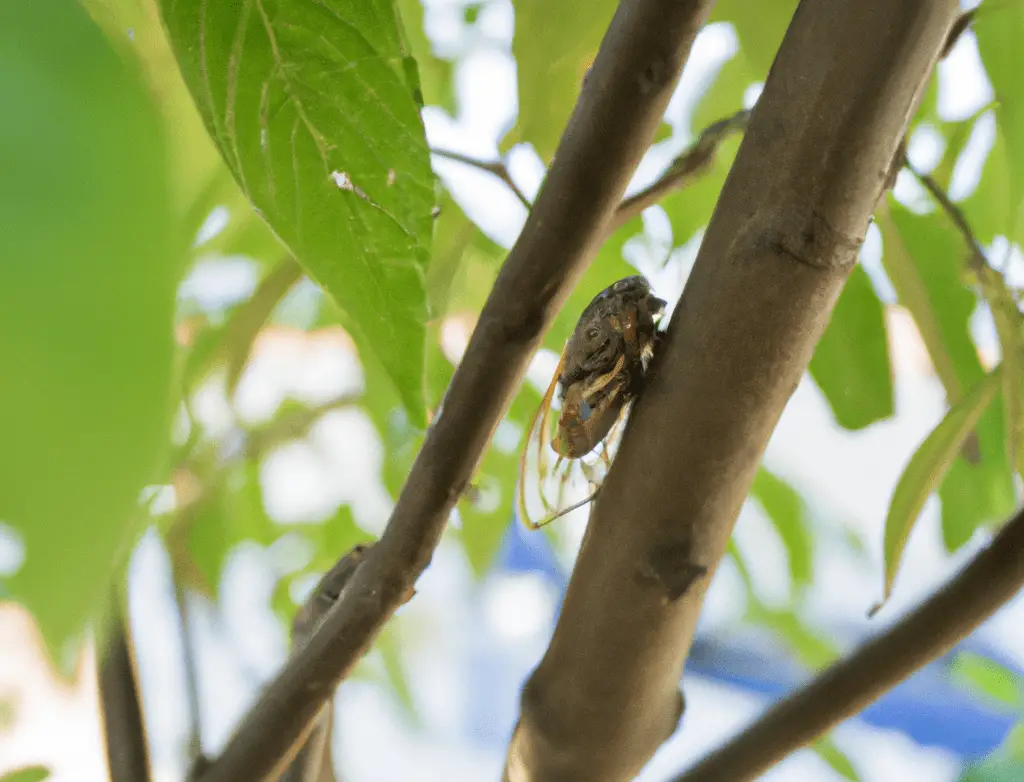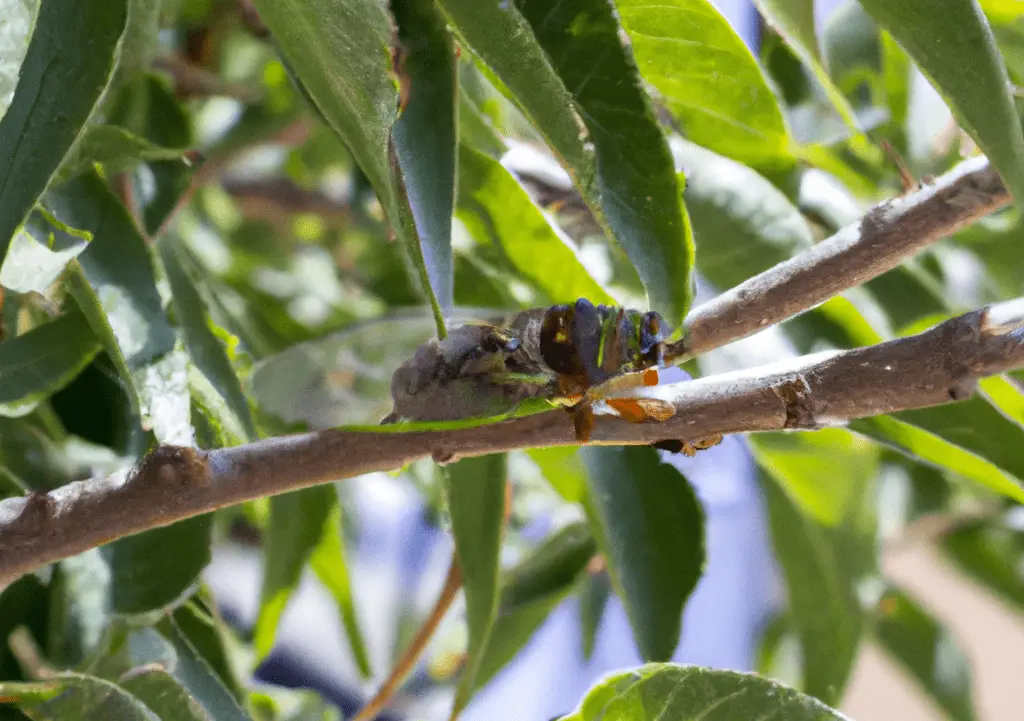Every year some cicadas will crawl out of the ground, mate, and come land on your trees. Deciduous trees that have gone dormant and have less sap stored in their branches are often targeted for these winged pests. Usually, the birds and predators will take care of a significant portion of the emerging adult cicadas, and the ones that survive are not great enough in number to do much harm to big or small trees.
Every 13 and 17 years, however, a group of periodical cicadas come out in mass and wreak havoc on unprotected trees in the surrounding area. Larger trees and hardwoods like oak trees can deal with cicada season, but smaller trees and newly planted trees may not fare as well. If you just got done planting trees and found out broods of cicadas are coming your way, this article has what you need to protect your plants.
Do Cicadas Eat the Leaves of Shrubs and Trees?
Cicadas are not locusts or grasshoppers, although they have similarities in characteristics. Locusts, like the emergence of cicadas, can happen suddenly and in shocking numbers, usually resulting in massive crop destruction and consequent famine. Periodical cicadas are not so diabolical and are only looking for a place to lay their eggs before they die peacefully and do not eat the trees or leaves.
The damage to trees comes from the slits a female makes to lay eggs on branches. The slices are usually around 1/4 to 1/2 inch in diameter and house the cicada eggs. The lowest branches on mature trees are often the preferred nesting spot, but smaller trees and shrubs will be used if other nesting options are unavailable.
Dead cicadas fall to the soil when they have finished mating and laying eggs, and the corpses can be used to fertilize the soil. the larval stage of cicada feasts on tree roots and drops to the ground when they hatch, where they burrow until the next generation of cicadas is ready to be hatched. While you may have eggs on branches and branch flagging, you will not have eaten leaves even from millions of cicadas.
Ways to Keep Young Plants Safe from Cicada Damage
Even though periodical cicada emergence will not lead to your plants being eaten, any cicada expert will warn you to protect your young trees and small plants from a brood. There are no reliable sprays, insecticides, or chemicals to prevent cicadas, and the only effective countermeasure is a physical barrier.
Depending on how vulnerable your tree is and how many cicadas you are expecting, you can decide how thoroughly you want to secure your trees from these noisy pests.
| Protection | Process | Results |
| Netting | Place tree netting used to keep birds off fruit trees around your smaller branches and attach it to the tree trunk securely | If the mesh has less than 1/4 of a gap, cicadas will be unable to get through and lay eggs on the branches |
| Polyolefin fabric | Use a special fabric tree wrap that allows moisture and air through and wrap branches and canopy tightly to protect the tree | Keeps cicadas from being able to grab onto and climb up the branches to split the bark and lay their eggs |
| Foil tape | Place around the tree trunk and the ideal branch that cicadas would flock to | Foil tape has no purchase for the hooked feet of cicadas to grab onto, and they will not be able to land, climb, or split the bark to lay eggs |
| Barrier tape | Place along the trunk and where branches meet the trunk | Makes a barrier that cicadas cannot get past to lay their eggs |
| Sticky tape | Place along lower branches and the main stem of the tree | Catches cicadas and stops them from being able to climb and create an egg nest |
Tree Wrap
Wrapping the entire tree is a good solution when you are working with small new trees that do not have an abundance of branches. These trees can more quickly be wrapped and unwrapped and require less material than a larger tree with an ample crown. Layers of fabric can block cicadas but will need to be breathable, or you could cause more problems for the tree underneath.
Spun-bonded, polyolefin fabric acts as a barrier against many kinds of pests and is a great solution and can be more reliable than typical bird netting at the garden center. In many cases, however, bird netting will be enough as long as the holes are too small for adult cicadas to climb through. Securing the net tightly to the trunk is also crucial, or determined bugs will crawl underneath and still lay some eggs.
Tree Tape
Sometimes only some branches are vulnerable, and a tree is too large to make a wrap worth it. If this is the case, different tapes, barriers, foil, and stickies can be used to deter cicadas away from the branches that cannot handle them. The small branches one diameter or less will have trouble healing after cicada damage, so using your tapes here can maximize your efforts.
If you place the tapes on your smaller trees and plants, then you can guide the cicadas to your larger trees with lots of branches. Branch healing occurs quickly in most healthy trees, so a brood of cicadas is only really a danger to the smaller ones. Try different tapes to see which is the most effective against the cicadas in your area.
How Can I Prevent Damage to my Trees and Shrubs from Cicadas?

Flagging is the main damage done by cicadas when they emerge in the fall. If you can keep your thinner branches safe from cicadas, you will see very little lasting damage. In most cases, the incessant noise and husks and corpses scattered around the yard are the biggest annoyances. But you need to protect small plants and trees, or else you may experience dead branches and loss of fruit.
If cicadas do manage to get onto your trees, prune after female cicadas die to kill eggs and avoid larvae from feeding on the tree roots. Placing the trimmed branches in the compost should be fine, as the heat and conditions should kill off any surviving larva. Make sure to remove the eggs to reduce the number of cicadas you will have to deal with next year.



